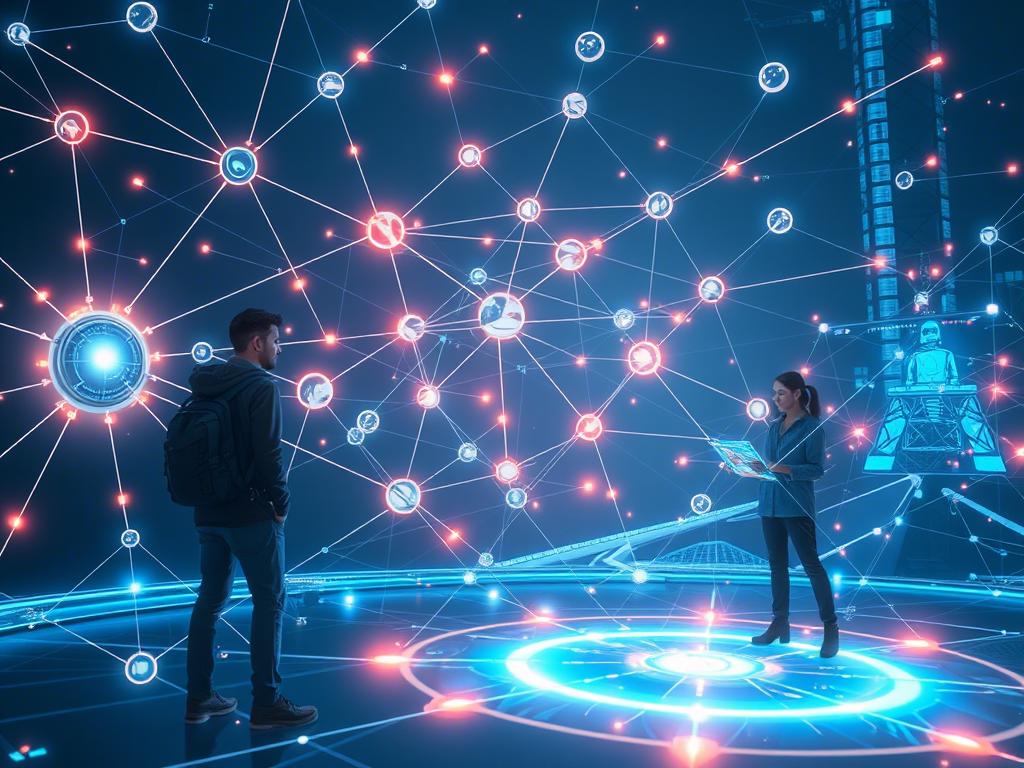The internet has undergone several transformative phases since its inception, each marked by groundbreaking shifts in how we interact with information, services, and one another. From the static pages of Web1.0 to the dynamic, user-generated content of Web2.0, and the decentralized, blockchain-powered ecosystems of Web3.0, the evolution of the web has been nothing short of revolutionary. Now, as we stand on the cusp of a new era, Web4.0 is emerging as the next frontier of internet technology—a paradigm that promises to redefine connectivity, intelligence, and human-computer interaction in ways previously unimaginable.
But what exactly is Web4.0, and how does it differ from its predecessors? In this deep dive, we’ll explore the core principles, technologies, and implications of Web4.0, shedding light on why it represents the future of the digital landscape.
What Is Web4.0?
At its essence, Web4.0 is the next evolutionary step in the development of the internet, characterized by the seamless integration of artificial intelligence (AI), Internet of Things (IoT), augmented reality (AR), virtual reality (VR), and quantum computing into a unified, intelligent ecosystem. Unlike previous iterations, which were primarily focused on content creation (Web2.0) or decentralization (Web3.0), Web4.0 emphasizes hyper-personalization, context-aware interactions, and autonomous systems that adapt in real-time to user needs.
In simpler terms, Web4.0 envisions an internet that doesn’t just connect people but actively understands them—anticipating their preferences, automating tasks, and providing immersive, intuitive experiences across devices and platforms.
For a foundational understanding of Web4.0, visit TechCrunch’s analysis.
Key Features of Web4.0
1. AI-Driven Intelligence
Artificial intelligence lies at the heart of Web4.0, enabling systems to learn, reason, and make decisions autonomously. AI algorithms will power everything from personalized recommendations to predictive analytics, creating a web that feels almost telepathic in its ability to anticipate user intent.
Imagine searching for travel destinations without typing a single query—your browser already knows your preferences based on past behavior and suggests options tailored specifically to you. This level of personalization extends beyond convenience; it enhances productivity, reduces decision fatigue, and fosters deeper engagement.
2. Immersive Experiences Through AR/VR/XR
Web4.0 blurs the line between the physical and digital worlds through augmented reality (AR), virtual reality (VR), and extended reality (XR). These technologies enable users to interact with digital content in three-dimensional space, transforming how we shop, learn, work, and socialize online.
For instance, instead of browsing flat images of furniture on an e-commerce site, you could use AR glasses to visualize how a couch would look in your living room. Similarly, VR-based collaboration tools allow remote teams to meet in virtual offices, complete with lifelike avatars and interactive whiteboards.
To see examples of AR/VR advancements, check out Meta’s XR initiatives.
3. Ubiquitous Connectivity via IoT
The Internet of Things (IoT) plays a pivotal role in Web4.0, connecting billions of devices—from smartphones and wearables to smart appliances and autonomous vehicles—into a cohesive network. This interconnectedness enables real-time data exchange, allowing devices to communicate and collaborate autonomously.
Picture a scenario where your car automatically adjusts its route based on traffic updates received from city infrastructure sensors, while simultaneously notifying your smart home to preheat the oven for dinner. Such scenarios highlight the potential of Web4.0 to create truly “smart” environments.
For insights into IoT trends, refer to IoT Analytics.
4. Quantum Computing for Unprecedented Power
While still in its early stages, quantum computing holds immense promise for Web4.0. Its ability to solve complex problems exponentially faster than classical computers will unlock new possibilities in fields like cryptography, drug discovery, and climate modeling. Quantum-enhanced algorithms could also optimize global supply chains, improve AI training processes, and secure communications against cyber threats.
Learn more about quantum computing’s role in shaping the future here.
5. Decentralized Autonomy Meets Centralized Convenience
Building on the decentralized ethos of Web3.0, Web4.0 incorporates elements of blockchain and distributed ledger technology to ensure transparency, security, and user sovereignty. However, it also integrates centralized systems to provide stability, scalability, and ease of use. This hybrid approach ensures that users retain control over their data while enjoying seamless, high-performance experiences.
For a balanced perspective on decentralization vs. centralization, read Harvard Business Review’s analysis.
How Web4.0 Differs from Previous Iterations
| Feature | Web1.0 | Web2.0 | Web3.0 | Web4.0 |
|---|---|---|---|---|
| Focus | Static content | User-generated content | Decentralization & ownership | Hyper-personalization & intelligence |
| Interaction | Read-only | Read-write | Read-write-own | Context-aware & automated |
| Technology Drivers | HTML, CSS | Social media, cloud computing | Blockchain, smart contracts | AI, IoT, AR/VR, quantum computing |
| User Experience | Passive | Interactive | Empowered & secure | Immersive & adaptive |
Real-World Applications of Web4.0
1. Healthcare Revolution
With AI-driven diagnostics, wearable health monitors, and AR-assisted surgeries, Web4.0 will transform healthcare delivery. Patients can receive real-time medical advice from AI doctors, while surgeons perform minimally invasive procedures guided by holographic overlays.
2. Smart Cities
Web4.0 will power the next generation of smart cities, where IoT-enabled infrastructure optimizes energy consumption, reduces traffic congestion, and enhances public safety. Autonomous drones and robots will handle tasks like waste management and emergency response.
3. Education Redefined
Immersive learning environments powered by AR/VR will make education more engaging and accessible. Students can explore ancient civilizations, conduct virtual science experiments, or attend lectures in metaverse classrooms.
4. Entertainment Evolution
Gaming, streaming, and social media will converge into fully immersive metaverse experiences. Users can attend live concerts, play multiplayer games, or shop for virtual goods—all within a single, interconnected platform.
For case studies on Web4.0 applications, visit Accenture’s Tech Vision Report.
Challenges Ahead: Navigating the Web4.0 Landscape
Despite its immense potential, Web4.0 faces several challenges that must be addressed to ensure equitable and sustainable adoption:
- Data Privacy Concerns: As AI systems collect and analyze vast amounts of personal data, ensuring user privacy becomes paramount. Regulations like GDPR and CCPA will need to evolve to keep pace.
- Digital Divide: Access to advanced technologies like AR/VR and quantum computing remains limited, potentially exacerbating inequality. Bridging this gap requires significant investment in infrastructure and education.
- Ethical Dilemmas: Autonomous systems raise questions about accountability, bias, and decision-making authority. Establishing ethical guidelines for AI and IoT is crucial.
- Cybersecurity Risks: The interconnected nature of Web4.0 makes it vulnerable to sophisticated cyberattacks. Developing robust security protocols is essential to safeguard sensitive information.
For discussions on these challenges, refer to MIT Technology Review.
Final Thoughts: Preparing for the Web4.0 Era
Web4.0 represents not just a technological leap but a cultural and societal shift. It envisions an internet that is smarter, more immersive, and deeply integrated into every aspect of our lives. While the journey to fully realizing this vision may take years—or even decades—the seeds are already being sown today.
Businesses, governments, and individuals must prepare for this transition by embracing lifelong learning, fostering innovation, and advocating for policies that prioritize inclusivity and sustainability. By doing so, we can harness the full potential of Web4.0 to build a brighter, more connected future.
Stay updated on Web4.0 developments by following trusted sources like Forbes Tech and Wired.



